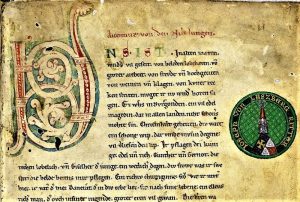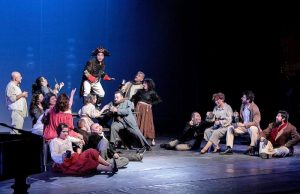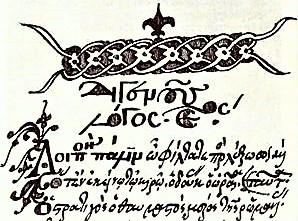Anastrophe
In the rhetorical figures of diction, in which the form of the sound of the words or their syntax is modified within the sentences, the anastrophe can be located. This consists in the inversion of the elements of a sentence. This rhetorical resource is widely used to attract the reader's attention and adjust the metrics in poems. The first reading may cause rejection, but after it is understood, it may be fixed by the reader. Similarly, you can see advertising texts where the use of the anastrophe is made and also in Spanish proverbs.
What is anastrophe?
Anastrophe is a rhetorical figure of speech that consists of violently inverting the usual syntactic order of two or more words in a sentence. For some specialists in the linguistic area, it is like a type of hyperbaton, while others classify it as a rhetorical figure different from the hyperbaton. However, both cases belong to a figure of speech rhetoric.
In classical languages, such as Latin, the order of words tends to be relatively free, and the use of anastrophe cannot be clearly observed.
In contrast to classical languages, in modern languages the use of connectors is necessary and for this reason, it is much easier to identify this literary figure.
The use of anastrophe suppresses much of the connectors of those used in a syntactically ordered sentence; this in order to obtain melodic effects and in the metric of the poems, as well as to put emphasis in the habitual sequence that has been violently inverted in a sentence.
Etymology
The word anastrophe is of Greek origin and means inversion.
Characteristics of anastrophe
Among the most representative characteristics of the anastrophe, the following can be mentioned.
- It is a rhetorical figure of diction.
- It consists of the inversion of two or more words of a sentence.
- Inversion occurs abruptly at the syntactic level.
- It is used to produce melodic or metric effects in poetry.
- It is widely used in Spanish proverbs.
- It generates interest in the reader.
- It is used in poetry to adjust the metrics of verses.
- It alters the logical order of the words in a sentence.
- It suppresses connectors.
- Destroys the syntactic order of a sentence.
- Tends to confuse the reader in the first reading.
Uses of the anastrophe
Anastrophe can be seen in sayings, literature, poetry and advertising messages.
Its use, generates a grammatical impact in the reader because of the way in which the words have been ordered, sometimes suppressing some connectors that would have a sentence with an ordered syntax.
Besides being used in poetry for metric and melodic purposes, it is also focused on the message’s stylistics.
Examples of anastrophe
Example 1
“To God praying, with the mallet giving.”
In this phrase, which is part of a Spanish proverb, one can observe the use of anastrophe since it is an inversion in the order of its words. The logical order could be: Let us pray to God and hit with the mallet.
Example 2
“It was the flowery season of the year.”
In this small verse of Góngora one can notice the inversion of words, making use of the analog. In this verse, the ordered text could be: It was the flowery season of the year.
Example 3
“Special fortune to man’s conduct.”
In this sentence the inversion of the logical order of the sentence can be observed, placing the subject at the end of the sentence and suppressing its verb. The logical order of this anastrophe would be: Man’s behavior is a special fortune.
Example 4
“Tunics creak, and wings in bowline
blonde candles inscribe the clear south.”
In this fragment of Rafael Alberti’s poem, it can be appreciated that the use of anastrophe suppresses some connectors that could not be suppressed if the sentence were syntactically ordered. If we imagine the syntactic order of this verse, we could construct it in the following way: The tunics crunch and in blond bowling, the candles are inscribed as wings to the clear south.
Example 5
“Great fortune life has and benefits grant.”
In this sentence, the anastrophe inverts the logical syntactic order of the sentence, which could be (in an orderly manner): Life has great fortune and grants benefits.
Example 6
“When love screams, feelings hurt.”
In this example, the use of anastrophe allows two connectors to be suppressed. It is intended to draw the reader’s attention by using the metaphor. The logical order of this sentence would be: When love screams, feelings hurt, or feelings hurt when love screams.
How to cite this article?
Briceño V., Gabriela. (2019). Anastrophe. Recovered on 23 February, 2024, de Euston96: https://www.euston96.com/en/anastrophe/










